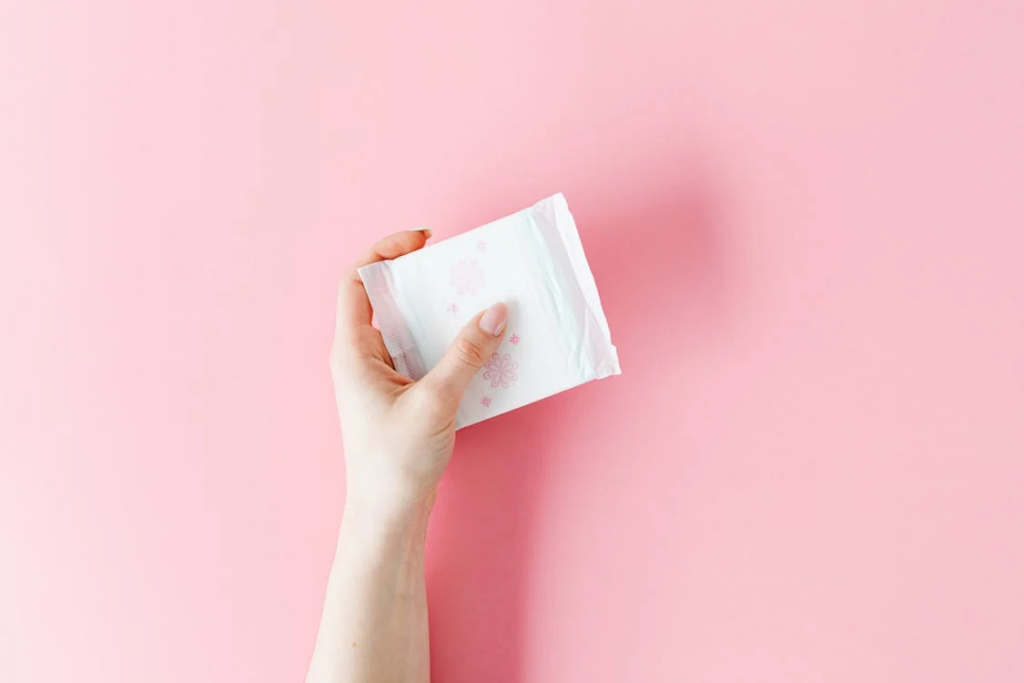"Menstruation is a normal part of growing up for young women, with common symptoms like cramps and fatigue that should be monitored for severity."

Most girls start getting their period around age 12, but in general, it can happen anytime between the ages of 10 and 15. Menstruating is a natural part of growing up for young women. During menstruation, many young women experience symptoms such as cramps, back pain, headaches, fatigue, and mood swings. While some discomfort is normal, severe or ongoing symptoms shouldn’t be ignored. This transitional phase is an opportunity for mothers to reassure their daughters.
This article aims to help mothers recognize their daughters’ common period symptoms, understand what sort of care they will appreciate, and know when to seek proper care from a doctor.
What Causes a Period?

Periods, or menstruation, occur due to hormonal changes in the body. Hormones like oestrogen and progesterone control the menstrual cycle. It begins with the follicular phase, where the brain’s pituitary gland signals the ovaries to develop follicles containing eggs. Around the middle of the cycle, another hormone surge triggers ovulation—the release of an egg from the ovary into the fallopian tube.
After ovulation, the empty follicle transforms into the corpus luteum, which produces progesterone. This hormone thickens the lining of the uterus in preparation for a possible pregnancy. If pregnancy doesn’t occur, hormone levels drop, leading the uterine lining to shed. This shedding results in a period—blood, tissue, and mucus flowing out through the cervix and vagina. Once menstruation ends, the cycle repeats with new follicles growing in the ovaries.
When is the Normal Timing of the Cycle?

Women have different menstrual cycles. The cycle is usually counted from the first day of one period to the first day of the next. However, cycles can vary a lot among individuals. Menstrual bleeding can occur every 21 to 35 days and can last from 2 to 7 days.
When menstruation starts, it’s common for cycles to be longer as the body settles into its rhythm. Cycles can be regular, occurring consistently each month, or they can be a bit irregular. Periods can vary in how heavy or light they are, and they can be painful or pain-free, lasting different lengths of time.
As women near menopause, typically in their late 40s to early 50s, their menstrual cycles may become irregular again. Menopause signals the end of menstrual periods, and during this time, irregular cycles or changes in bleeding patterns are normal.
Any unusual bleeding or concerns about menstrual health should be discussed with a healthcare provider, as irregular bleeding could signal other health issues needing attention. Talking openly with healthcare professionals is crucial for managing menstrual health at different stages of life and maintaining overall health.
What Are the Symptoms?

It’s important to know that not every woman will have the same symptoms, and the intensity and combination of symptoms can vary greatly. Common premenstrual symptoms in your daughter may include breast swelling and tenderness, feeling tense or irritable, bloating, acne breakouts, and cramps in the legs, back, or stomach. Many young women also feel tired and experience mood changes as part of premenstrual syndrome (PMS). These symptoms typically occur in the days leading up to the period and can significantly impact daily life and emotional well-being.
For mothers supporting daughters dealing with menstrual issues, it’s crucial to offer support and understanding. Encouraging open discussions about menstrual symptoms can help you to understand what your daughter is experiencing, which may be completely different from your own experience. Educating and normalising conversations about menstruation can improve overall health outcomes and quality of life for young women dealing with menstrual issues.
When to Call a doctor?

Most girls have regular menstrual cycles without problems, but certain signs mean it’s important to see a doctor for advice. If your daughter is 15 and hasn’t started her period, or if her period hasn’t become regular after having it for over 2 years (usually every 4–5 weeks), it’s good to contact her healthcare provider for evaluation. Also, if she has bleeding between periods or severe cramps that don’t get better with over-the-counter pain relievers like ibuprofen or naproxen, talking to a doctor is recommended.
Other symptoms to discuss with a doctor include very heavy bleeding (saturating a pad or tampon faster than every hour) or periods lasting longer than about a week. Severe PMS symptoms that greatly affect daily life—like trouble sleeping, dizziness, bloating, withdrawing socially, trouble concentrating, or extreme fatigue—should also be discussed with a healthcare professional for proper evaluation and management.
Talking openly with a doctor about any irregularities or troubling menstrual symptoms is important for good reproductive health. Getting prompt medical attention can help ease discomfort, manage symptoms, and ensure good menstrual health in the long run.
How to Treat Menstrual Pain?

To ease physical symptoms during menstruation, it’s important to consider lifestyle factors that can impact comfort and well-being. Encouraging a balanced diet is key. Limiting salt and caffeine can help reduce bloating and discomfort. Try a diet rich in fruits, vegetables, whole grains, and calcium-rich foods to provide essential nutrients and support menstrual health. Check out Smart Food Choices for Kids’ During Exams and Is It Safe for Teenagers to Consume Caffeine?
Focusing on dietary choices like more fruits, vegetables, and whole grains can maintain stable blood sugar levels and supply important vitamins and minerals for menstrual health. Foods high in calcium such as dairy products, leafy greens, and fortified plant-based alternatives can also help ease symptoms like bloating and mood swings. Staying hydrated by drinking plenty of water will help to reduce bloating and alleviate cramps.
Along with dietary changes to improve your daughter’s menstrual health, there are other options you can try to help manage her discomfort. Tell her to take a warm bath or shower, which can bring relaxing comfort and aid with cramps. Putting a heating pad or hot water bottle wrapped in a tea towel on her stomach might also help relieve cramps and bring comfort. Gentle massages on her stomach and back can help ease the stress and discomfort caused by menstruation cramps.
Encouraging your daughter to do light activities like yoga, swimming, walking, or cycling will help her menstruation symptoms and overall well-being. These activities can aid with pain relief and mood enhancement during her menstrual cycle. If required, visit a healthcare provider about utilising pain relievers to effectively and safely manage pain and discomfort.
